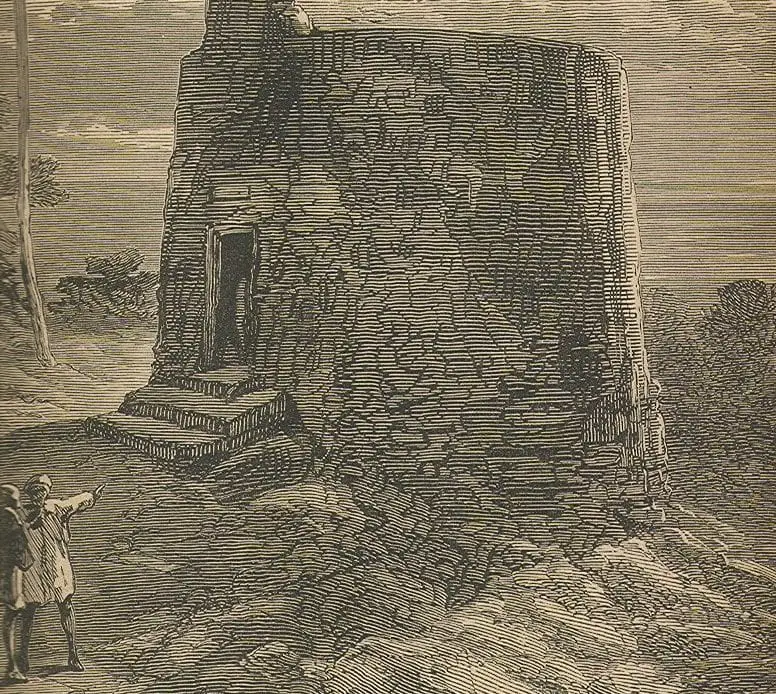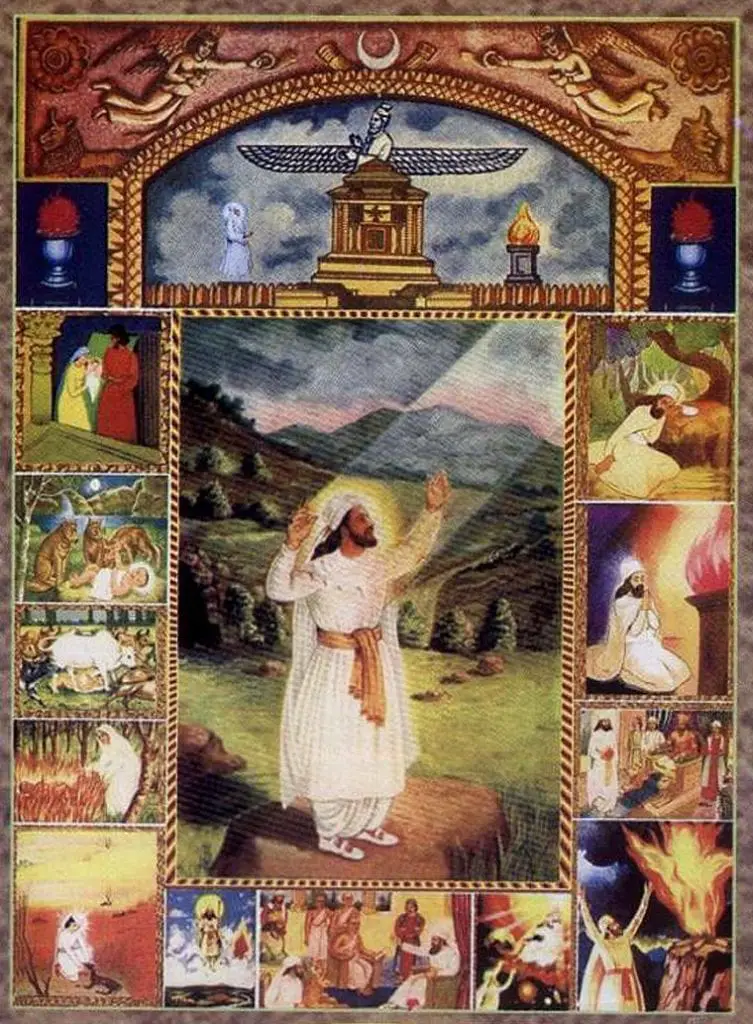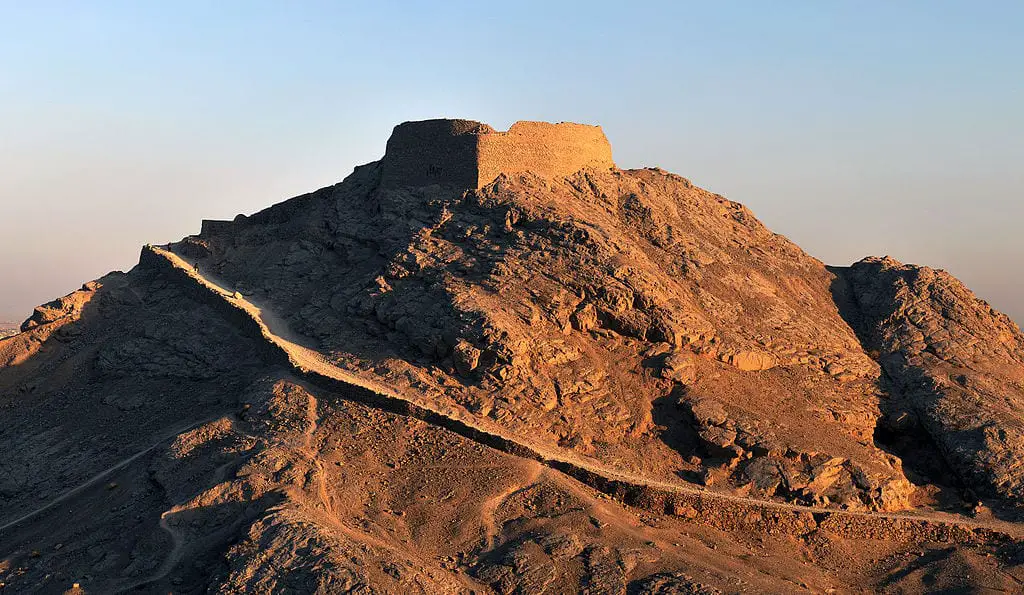
The ancient pre-Islamic religion, belonging to Iran, Zoroastrianism survives there even today. In remote and isolated areas of the now-Islamic country, it is quite rare, but you can see old reminiscent buildings, most notably, the Towers of Silence and temples on hilltops. More evidently (and prosperously), the Zoroastrian faith thrives in India, where descendants of the religion that began in Persia, the Parsis, live. The Persian prophet, Zarathushtra (Zoroaster) also a religious reformer, lived before the 6th century BCE. He is conventionally regarded as the founder of the faith. As it flourishes among a minority of followers today, it includes monotheistic and dualistic aspects. Theologians proclaim that it has antecedents of Judaism, Christianity and Islam.
Religious Practice
Founded in Persia, the religion practiced abundantly for many years, Zoroastrianism came to be the subject of persecution under Arab invaders of the country. The faith was not allowed free rein and its followers forced to flee to India. This happened in the 10th century BCE. The Parsis live freely in India and follow the old Persian faith, adopting its many tenets, some including the prevention of conversion into the faith. This is the main reason for a decline in the lack of followers of the faith today. The major beliefs of the religion are in its main holy text, the Avesta. The text states that the Creator (God), Ahura Mazda, is constantly in a battle against Angra Mainyu, the Spirit of Destruction. Ahura Mazda will ultimately prevail, so believers claim, and Angra Mainyu defeated.
Recognition of Zoroastrianism
Darius I was possibly the first Persian king to acknowledge the religion, as his old inscriptions are filled with praises for Ahura Mazda. His son, Xerxes I, was a keen worshiper of the faith. Although there is not much evidence that he understood the religion, an indication that he believed salvation is achieved in the afterlife, exists. The new Persian Dynasty ruled by the Sassanid emperors established Zoroastrianism as the religion of the state. The religion as it existed in the ancient Persian era, was built on the worship of fire, and many sacred fires still exist in Iran today. Minorities of Zoroastrians that live in Persia still lay their dead on raised edifices (the Towers of Silence), to decay by means of natural elements.
Significance of the Faith
Zoroaster is the Greek name for the prophet, and the ancient Greeks viewed the religion as dualistic and built on human destiny. The prophet is documented as having been an influence on Pythagoras in Babylon, and inspiring old doctrines of magic, spirituality and astrology. Built on the principle that good wins over evil, the religion prompts this struggle in all its followers. It states that, since people have the power of freedom of choice, they must choose (with body and soul) to fight evil.
The conflict between good and evil must be won, not at a physical level, but at a spiritual level too. The purification of the spirit is imbibed in disciples of Zoroastrianism, where people must strive for purity of the body and soul. This is a reason conversions into the faith are prohibited. In other contexts of the faith, when Zoroastrianism and death are spoken of, believers must avoid defilement or any contact with dead matter. It is the spirit that lives, and is more meaningful.

Rituals Today
When a Zoroastrian passes on, the religion believes that he or she must be “laid out”. In a city in which most Indian Zoroastrians live today, Mumbai in India, the Towers of Silence are the places where this tradition exists. In Zoroastrianism, as soon as breath has left the body, the physical state becomes impure. “Death” is considered the work of Angra Mainyu, the Spirit of Evil or Destruction. This is in contrast with the belief that life is pure and all that is alive on the Earth is beautiful, influenced by God’s doing. In the religion, contaminating the elements of life, Earth, Air, Fire and Water, is blasphemous. A corpse, believed to be decaying matter, cannot come into contact with any person attending a funeral.
Towers of Silence
Zoroastrians lay out the dead corpse while the recitation of funeral prayers is on. After the ceremony concludes, the corpse is carried up to a specially built tower (the dakhma). There laid, exposed to the heat of the sun and birds of prey, like vultures, the corpse is likely to diminish with nature’s help. This is an ancient tradition, and in many Western countries, where it may not be feasible for several reasons, Zoroastrians opt for cremation. Due to the rapid decline in the species of vultures, and the impractical means of disposal, many modern believers of Zoroastrianism choose cremation today, even in India.

A Spiritual Understanding
Zoroastrianism and death, described in the Avesta’s nineteenth book, the Venidad, states that a dead body maybe possessed by a demon, “nasu”, making it impure. As mentioned earlier, this impure state of matter cannot come into contact with any natural element. This is particularly the case with fire, as fire is an element that Zoroastrianism holds as the key to its faith. Special cleaning rituals occur when the corpse arrives at the dakhma (Tower of Silence). The Tower of Silence is round and high in its construction.
The laws of Zoroastrian purity also emphasize that once washed, the corpse cannot be touched by living beings, even close relations of the dead. Corpse bearers, “nasusalars”, or “the ones who control the demon, nasu,” carry the corpse to the Tower of Silence. Once they have carried a corpse, they have been contaminated by nasu. After the funeral, these corpse bearers bathe in taro, cow’s urine, to cleanse them of contact with the demon. In Iran, in the ancient cities of Yazd and Kerman, where Zoroastrianism is still actively practiced, no dakhmas exist, at least not for actual use. Burial grounds have replaced the old customs.
Significantly, in old text of the Avesta, corpse bearers are not designated as such by the religion, and could be anyone from the family of the deceased. Nonetheless, to carry forth the symbolism of purity and defilement, suggestions for corpse bearers to be women in the midst of menstruation have been noted. Menstruation, symbolizing “impurity”, is a state permitted for the act of corpse carriage.
Materialism and Spiritualism
According to Zoroastrian faith, human beings are purely spiritual, only covered by a physical form that decays upon death. The body “dies”, considered decaying matter, while the soul lives on. The soul prayed for, for a duration of three days after death, aids it in its journey to God. Three main spiritual aspects of humans exist. These are soul, fravashi and spirit. These three aspects and their dominance depend on the way in which a Zoroastrian has led his or her life. The trio of components includes a store of the person’s thoughts, words and deeds. This translates to the person’s conscience and sense of justice and truth.
The believers of Zoroastrianism take solace in the truism that if they have led a life as faithful disciples, they are ready for death. Descendants of the ancient keepers of the faith at Yazd, Iran, hold that they know the soul’s fate after death. Consequently, there is no mourning for a spirit that is free, so death is a celebration. Believing in rebirth, these Zoroastrians, upholding old traditions, position memorial stones. The date of a human’s passing is the date when a second birth takes place, written on the stone.
Reap As You Sow
Regardless of the spirit’s destiny, it doesn’t disappear upon death. The spirit/soul continues to exist as long as life and time. Souls that have led lives filled with goodness and virtue are “ashavan” (“asha” meaning goodness). They combine with the fravashi and this turns into a guardian angel. Zoroastrianism and death have a lot to do with how an individual leads his or her life. To attain peace in the spirit world, holders of the faith must do their best to reach “ushta”, or peace and happiness, with oneself in the physical world.
Spiritual Guidance
In preparation for an individual’s death, the individual must lead a peaceful life, leaving behind a spiritual legacy in terms of the qualities they possessed. Additionally, a tangible legacy in the form of some service to mankind must be left behind. After death, the soul or spirit stays in the vicinity of the body. At dawn of the fourth day following death, it guides the soul to the area of judgement and eventual physical separation. Good thoughts, words and deeds are rewarded by a happy journey of the soul into eternal bliss, whereas the opposite is true for evil thoughts, words and deeds. Souls of people are harbingers of their existence on earth and determine the way ahead in the afterlife. The basic rule of Zoroastrianism proposes that humans have the freedom to choose how to live on earth and that determines the fate of their spirit later. The body is only a carrier for the spirit which is all-encompassing. Metaphorically, the “chinavat” (as mentioned in the Avesta) is the bed that the spirit of the living makes, to lie on after death.
